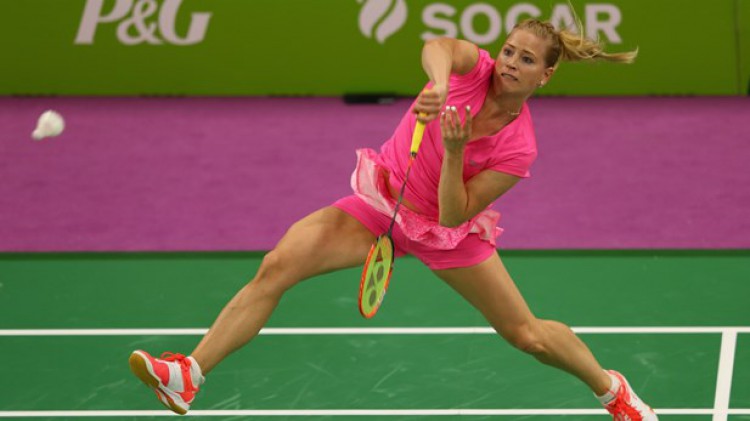ID :
372295
Wed, 06/24/2015 - 15:19
Auther :
Shortlink :
https://oananews.org//node/372295
The shortlink copeid
Record smashes key to badminton boom

Baku, June 24, AZERTAC
With the world record speed for smashing a shuttlecock standing at 493km per hour, badminton players could be considered superhuman for ever returning one over the net.
That statistic does, of course, hide the fact that the unique physics of the shuttle slows it down considerably - although not as much as it might appear to the eye of spectators at the European Games.
So while badminton's record - set by Tan Boon Hyeong in 2013 - technically beats tennis' mark of 263kph, the reality between the two is somewhat different. But how different?
"How fast it really arrives at the opponent is very, very difficult information to collect," said Boris Reichel of shuttlecock manufacturer Yonex, in the room where he restrings rackets for athletes at Baku Sports Hall.
"That was the big challenge to invent the Hawk-eye system for badminton, because it's not round so it's hard to calculate the real flight.
"But even if the shuttle still loses half or even 70 per cent of the speed when it reaches the opponent, then because it only has to go five to seven metres it still comes on to the opponent at about 200km per hour."
The drag on the shuttlecock is caused by the fact that it flips in the air 20 milliseconds after coming off the racket, before stabilising 80 milliseconds after the smash. But it still reaches the opposing player a long time before the remaining nine-tenths of a second or so are up.
"The speed is high, but the reaction time is what we're really talking about," says Reichel. "This is what makes badminton a top sport - people have to practise for years to learn these reactions."
Which is also why records like Tan's are important for the perception of badminton as an elite sport, even if the initial breakneck speed of the shuttlecock is short-lived.
"Many people play badminton in Europe, but very few play at the really top level. Not like in Asia," said Reichel.
"The shuttlecock's aerodynamics makes it very easy for anyone to have rallies, so people think it's an easy game. The courts look smaller on TV and people think, 'I could do this myself'.
"Our struggle is to convince people in Europe that this is a real top sport, not only a faster version of something they can do in their garden."





